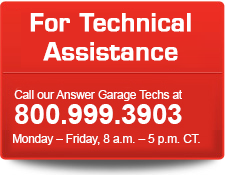What can I expect from my new shocks?
Increase driver comfort and control:
- New shocks are better equipped to keep the vehicle’s tires on the road, which increases control of the vehicle
- New shocks help soften the harshness of an uneven road making the drive more stable.
- New shocks can also help prevent the vehicle from excessive leaning on turns, nose-diving on stops or veering in crosswinds, providing a more controlled and smooth ride
Reduce Tire Wear:
New shocks will reduce tire wear and potentially increase your tires’ life. Worn suspension components, such as old shocks, cause your suspension to move excessively, resulting in additional and sometimes uneven wear on your tires.
Decrease stress on – and increase the life of – other key components and systems:
- When tires lift off the road and then fall back down, it generates substantial energy which the rest of the vehicle components must absorb, thereby causing excessive wear and tear on these other parts, pieces and systems
- One of the key functions of shocks is to absorb the energy and harsh road conditions of everyday driving and to isolate it from reaching the rest of the vehicle. If shocks are old and performance is reduced, this function is compromised, causing other components to experience extra wear. Example: when a vehicle with worn shocks nose-dives while braking, it causes extra wear on the brakes.
- Worn shocks may also cause the vehicle to move excessively, which causes additional wear on pivot points of the vehicle, such as when a vehicle leans or sways excessively in turns, or veers in side winds.
Your new shock will not:
- Change your ride height.
- With the exception of a few specialty shock products, ride height is determined by your springs, other suspension components, and the vehicle’s original design and construction
- Cause or fix vibrations.
- Certain vibrations are ongoing and are caused by rotational forces in the drive train, wheels and tires. The only way to reduce/remove these vibrations is to repair their cause. A shock works by damping the impact of individual forces as they occur, such as sudden pavement bumps or potholes. It is not designed to correct repetitive, ongoing problems with other systems.






